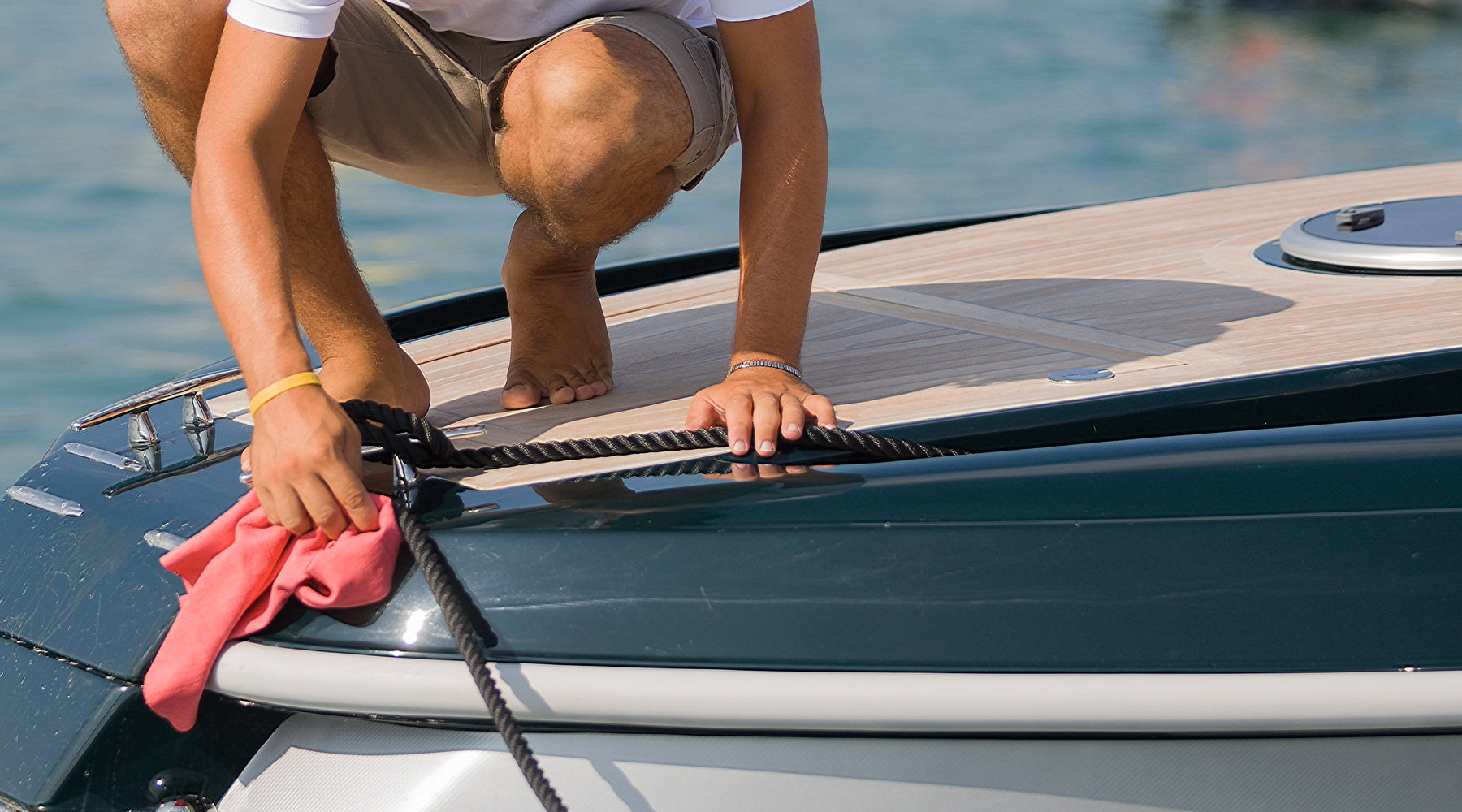Maybe you spotted her on Craigslist—faded gelcoat, cracked seats, and “ran when parked” in the description. Or perhaps your uncle gave you a “classic” that’s been dry-docked since Clinton was in office. Either way, you’ve got the itch.
But before you start prying panels loose and pricing marine paint, let’s talk reality. Most boat restorations begin with good intentions but often end in broken budgets, half-finished hulls, and a very disappointed group chat.
Read this first if you’re planning a boat restoration before your dream project becomes a driveway ornament.
Budget Realistically, Then Add 30 Percent
Restoring a boat is not a bargain hobby. You’re not saving money; you’re buying experience. With interest. A modest 20-foot fiberglass runabout can set you back a pretty penny when trying to bring her back to life, even if you do most of the labor yourself.
Consider the usual suspects: epoxy, wiring, stainless hardware, and haul-outs. A single gallon of marine epoxy can run you double digits these days. And don’t forget the stuff you’ll burn through constantly, such as sandpaper, gloves, acetone, and more sandpaper.
Set a budget, then pad it by at least 30 percent. Track every tube, screw, and impulsive online order. Keep a ledger, and update it every week.
Create a Timeline, Not a Fantasy
Most folks underestimate timelines by a landslide. A weekend warrior working solo will need two to three weekends just to strip the hull. And wiring? That’s a month of Saturdays.
Timelines matter. Perhaps you have a boatyard deadline. Maybe your HOA already hates you. Or, it’s possible that your significant other is giving you the look that says, “How long is this going to take?”
Build a schedule that fits your availability, not your optimism. Then double it. That way, if things go wrong, you’ll be a little frustrated—but not blindsided.
Know What To Replace Versus Restore
Some things are worth saving. Others are lying to you.
It’s easy to get attached to original fittings or that charming teak rub rail, but nostalgia doesn’t float. If you’re dealing with rotted stringers, a soft transom, or a spongy deck, replacement is the answer. These aren’t cosmetic flaws; they’re structural failures waiting to happen. A fresh coat of paint won’t keep your fuel tank from leaking into the bilge.
On the flip side, don’t waste time and money changing things that are still doing their job. Aluminum rails with surface oxidation can be buffed out. Stainless hardware with life left can be soaked, cleaned, and reused.
And remember, cosmetics can wait. Focus first on what keeps the boat strong, dry, and safe. The cup holders can come later.
Strip It Down the Smart Way
Teardown isn’t the time to go rogue. Take photos of everything. Label wires. Bag and tag every piece of hardware. You may think you’ll remember where that switch panel went or which gauge was hooked to which wire, but it’s easy to misplace things.
When it’s time to strip the hull, resist the urge to grab the most aggressive tool in your shed. Instead, take the time to choose the right sandblasting media for the job. Crushed walnut shells are often a smart choice; they’re aggressive enough to remove paint but gentle on gelcoat, especially on older fiberglass.
Don’t forget to cover anything worth saving, including cleats, hatches, and trim. Stripping is messy, and once something gets blasted, there’s no un-blasting it. Think like a surgeon, not like a demolition crew.
Electrical and Plumbing—Don’t Wing It
There’s a special kind of chaos reserved for boat wiring that’s been “customized” by six previous owners with different color codes and zero labeling. Don’t be that person.
Stick to ABYC wiring standards whenever possible. It’s not overkill; it’s the difference between a reliable weekend cruiser and a floating mystery box. Use marine-grade wire, label both ends, and invest in heat-shrink connectors. They’ll save you from chasing down corroded crimps six months from now.
As for plumbing, old hoses should be replaced every five years. Fuel lines crack. Water hoses stink. Oh, and that brittle PVC elbow fitting? It’s probably already leaking. Substitute it now so you don’t have to deal with it mid-season.
Don’t Skimp on Safety Gear
Restoring a boat doesn’t stop at fiberglass. Safety gear deserves a thorough check and likely a complete refresh. Fire extinguishers expire after 10 years, so unless you’ve bought new ones recently, they’re probably toast. Flares typically last 42 months from the date of manufacture. So, if they’re dusty, they’re done.
Are you thinking about PFDs? If you are, go with Type III for inland, or consider a hybrid inflatable for comfort without sacrificing functionality. Just make sure it fits and that you actually wear it.
Pro Tip
Install a bilge alarm. They’re cheap insurance, and you should test them once a month. Because if your boat is taking on water, the sound of your buddy yelling, “Hey, is that supposed to be happening?” isn’t enough.
Plan for What Comes After
Now, restoring a boat is half the battle. The other half is using it.
Take the time to think through what your post-restoration life will look like. Where will you launch? Do you need a new trailer? Are you ready to start charting your first overnight run, or are you staying local for now?
If your boat is blue-water capable, consider these tips for planning your first offshore adventure before setting your sights on the horizon. Consider float plans, comms gear, backup nav tools, and who you trust on board when things get real.
Rely on a Paper Trail
Old boats tend to come with even older paperwork, or none at all. If you think you can skip this step, think again. You’ll need clean registration and title documents to operate, sell, or insure your boat legally.
If your boat has no HIN (hull ID number) or has been out of the system for years, check your state’s process for titling abandoned or undocumented vessels. In some states, you may be required to have a notarized bill of sale, undergo a visual inspection, or provide a surety bond.
Also, get insurance. Even if it’s just liability coverage. Because nothing ruins a relaunch quite like another boat’s anchor through your topside and no coverage to help you get back on the water.
Don’t Forget the Bolts
When you think you’re done, that’s the moment to double-check everything. Repack the trailer bearings. Replace the winch strap. Air up the spare tire. And yes, stock the cooler. These are the easy-to-miss details that bite hardest when you’re ready to hit the ramp. No one wants to delay their first launch because they forgot a single bolt or the drain plug.
It’s a good thing you read this first before planning your boat restoration. Sure beats figuring all this out halfway through a teardown!


Share:
Beard Oil vs Balm: Complete Comparison Guide
10 Jeep Things Only Jeep People Can Understand